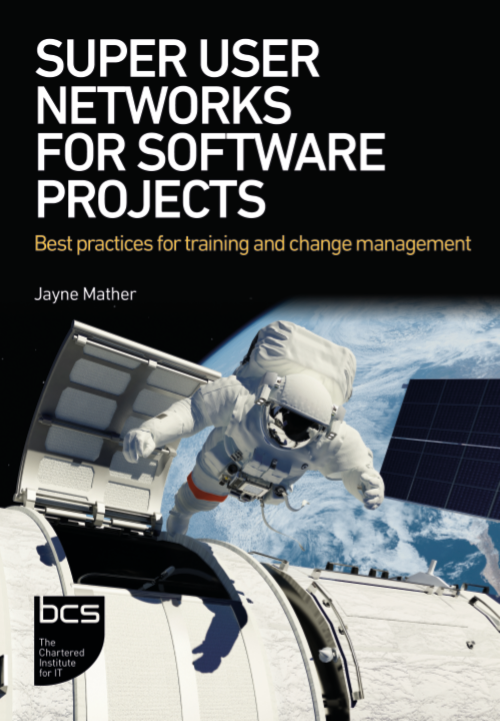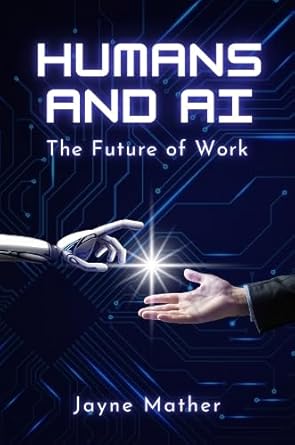The Global AI Adoption Playbook
Published: Saturday 8th of February 2025

AI Adoption Strategy: A Consultant’s Guide to Widespread AI Adoption
Client: Planet Earth
Consultant: Technology Adoption Expert, Jayne Mather
Objective: Achieve global AI adoption in a way that people embrace, trust, and support.
The Problem Statement
Planet Earth, we’ve come a long way, we’ve adopted fire, the wheel, the steam engine, we replaced the abacus with the calculator and we not only survived, we thrived.
OK I can’t take any credit for those, but together we have overcome resistance to replacing typewriters with PC’s, embracing the internet, we replaced those filing cabinets with data analytics and the spreadsheets with BI dashboards (well we still love a spreadsheet), we adopted the cloud and ERP systems, and if we ignore that time I tried to get you to adopt the metaverse, then together we can adopt AI too.
There’s a small issue: your people aren’t quite sure they trust AI yet. Many are concerned, a few are rebelling, some are outright terrified. As your dedicated consultant in technology adoption, my job is to ensure we can all see the results of the many benefits AI can bring to the earth, and that it isn’t rejected due to lack of trust, practical execution, or, let’s be honest, sheer human stubbornness.
So, let’s craft a global strategy for AI adoption that makes AI work for humanity, rather than something humanity works against.
1. Agree on a Global Vision
First, we need to set our intentions and collectively agree what we want the end game to be for humans and AI. This is the first missing part for me, some very clever people are building amazing things, and the speed of the technology advancing is surprising everyone, but is there any kind of agreement on what we’re building for and what our future looks like? We’re building it because we can, and because human curiosity is a wonderful thing but the first thing I advise organisations on in technology adoption projects - is to have a vision, one that we can all aim towards and get behind.
Sam Altman, CEO of Open AI, described his belief that “human spirit” will always prevail on a highly recommended TED Talk with Adam Grant. I share his optimism, but is it enough to leave that to chance?
Here’s my suggested vision statement:
AI exists to enhance human potential, not replace it. Our goal is to create a future where AI enhances creativity, decision-making, and well-being, where humans have more time to spend on what creates value, connection and progress. AI is a tool, a technology that serves humanity, not the other way around. AI must be harnessed to solve global challenges—climate change, healthcare, education, and inequality—driving progress that is inclusive, ethical, and sustainable. The future of AI is one where humans and technology work in harmony, empowering societies and enriching lives. We are building AI to uplift humanity and create a better world for all.
Key Action: Promote AI as an assistant rather than a replacement. AI should be seen as a trusted co-worker, like that calculator for maths, removing the fear that the robots are coming to take over.
2. Build Trust through Responsible AI Frameworks
Building trust is essential. Without a structured, transparent approach, AI adoption will be met with resistance. Remember the early industrial revolutions? Workers feared machines would replace them. They protested, they smashed looms, and entire industries collapsed due to poor management of change. Let’s learn from history.
To build trust, AI must be explainable, accountable, and aligned with human values. People need to understand how AI makes decisions, who is responsible for its actions, and how it benefits them. Without this clarity, AI adoption will be derailed by scepticism, misinformation, and fear. Public and private sectors must work together to establish global AI governance, ensuring ethical guidelines and transparency become standard.
Key Action: Governments and businesses must agree to adopt responsible AI frameworks that emphasise fairness, transparency, and accountability. AI policies must be clear, fair, and focused on improving human lives. If people trust that AI is working for them, they’ll support its adoption.
3. Preventing Job Displacement
AI is a productivity multiplier, but it also sparks fear about job losses. The solution? Reskilling and role augmentation—not replacement. Whether through regulations or global standards, we must ensure the instinct is first to reskill people, augment jobs, and create new opportunities. Not to replace people with AI and robots.
We must remember that robots do not pay tax, and robots do not spend money in our businesses, people do, keeping an active workforce who contribute taxes and have disposable income is essential for economies to operate successfully. Organisations who want to operate in a thriving economy need to carefully utilise the technology and prioritise the job security of employees for the health of the economy.
Organisations need ethical frameworks that balance tech advances with human needs. We need companies to work together with governments and institutions to create policies that:
- Support ongoing people development through reskilling programmes
- Keep jobs secure by focusing on increasing rather than replacing roles
- Create support mechanisms and a clear path forward for roles affected by AI
- Make sure AI’s benefits reach everyone fairly
Key Action: AI adoption must be coupled with large-scale investment in workforce reskilling.
Example: Instead of replacing accountants with AI, train them to interpret AI-driven financial insights. Instead of replacing factory workers, upskill them to operate AI-powered machinery.
The Future: The four-day workweek and universal basic income (UBI) must eventually enter the conversation. If AI drives productivity, why shouldn’t people work less while maintaining financial security? The economy benefits when people have jobs, disposable income, and stability.
4. Human-AI Collaboration Must Be Designed Intentionally
We can’t just throw AI into organisations and hope it works. The key is to redesign work that allows AI and humans to collaborate effectively and those humans should be in charge of that redesign. We always involve and engage the people who are going to be impacted if we are to achieve technology adoption.
Collaboration between humans and machines is central to the organisational culture, with AI serving as a catalyst for innovation and continuous improvement. In this utopian vision of an AI-driven organisation, humans and AI work together harmoniously, embedded into every role and department, leveraging each other’s strengths to achieve common goals and drive sustainable growth and innovation.
Remember that the value of the time you have saved by deploying AI shouldn’t be viewed simply in monetary terms, but in what your people can do instead with the time you have freed up.
Key Action: Implement structured AI adoption roadmaps that focus on process re-engineering to achieve human-AI collaboration.
Example: In the airline industry, autopilot assists pilots, but humans remain in control. AI should work the same way in business, healthcare, and government—augmenting human decision-making, not replacing it.
5. Society Needs a Narrative of AI for Good
People love a good story. Right now, the dominant AI narrative is one of job loss, corporate greed, and existential threats. We need to flip the script.
Experience tells me that integrating new technology is most widely embraced when it is framed as a force for progress rather than disruption. A good communication strategy is another thing I always advise organisations on. The way we communicate AI’s potential will directly impact how people accept, trust, and support its adoption.
To achieve this, AI needs a compelling, human-centred narrative—one that focuses on its ability to improve lives, create new opportunities, and solve humanity’s biggest challenges. Governments, businesses, and media must collaborate to make AI innovation relatable and tangible through real-world examples that resonate with people’s everyday experiences. Public education campaigns, storytelling through film and media, and transparent AI case studies can help shift the perception of AI from a looming threat to an exciting opportunity.
Key Action: Governments, businesses, and media need to highlight AI’s role in solving humanity’s biggest problems. Create a public narrative that positions AI as a force for social progress, not just economic gain.
Example: AI is being used to combat climate change by optimising energy use and reducing waste. AI-driven drug discovery is speeding up treatments for diseases.
6. Regulation and Global Cooperation Are Non-Negotiable
We can learn lessons from how we adopted the internet and social media. Both brought a lot of good to the world, but due to little oversight and lacking strong regulations early on—this lead to privacy issues, misinformation, and monopolisation. AI must not repeat this mistake.
History has shown us that when nations compete in technological races without collaboration, the results can be divisive, dangerous, and unpredictable. The space race, the nuclear arms race—these competitions drove rapid advancement but at great geopolitical risk. Instead of racing to become the most AI-advanced country, nations must unite to develop AI responsibly, ensuring it serves all of humanity rather than exacerbating inequality and division.
When countries work together, we can create AI that protects individual freedoms, enhances security, and maximises innovation without sacrificing human rights or global stability.
Key Action: Countries must collaborate on global AI governance with a unified approach to AI ethics and regulation.
Example: The Paris Agreement for climate change was a global response to an existential crisis. AI governance needs a similar multilateral approach to ensure ethical and fair use.
The AI Adoption Blueprint for Planet Earth
- Set the Vision: Agree on the collective intention for the future of AI
- Make AI a tool, not a threat: Focus on augmentation, not replacement.
- Build trust: Transparency and ethical frameworks must be at the core.
- Address job displacement head-on: Invest in reskilling, not layoffs.
- Design AI for human collaboration: Redesign the workplace leveraging AI and workers.
- Change the AI narrative: Tell the story of AI as a force for good.
- Regulate AI globally: Cooperation beats competition in shaping the future of AI..
Planet Earth, the choice is yours. You can either embrace AI responsibly and design a future where technology enhances humanity, or you can ignore these lessons and face resistance, inequality, and instability.
We have the opportunity to create an AI-powered world where innovation, prosperity, and ethical responsibility go hand in hand. Let’s not waste it.
The future is not AI or humans. It’s Humans AND AI.
For more, check our the book ‘Humans AND AI: The Future or Work’ by Jayne Mather. The blueprint for AI adoption: Embrace AI for good, redesign work and reshape our world.
https://www.amazon.co.uk/Humans-AI-Future-Jayne-Mather/dp/1637427743/
Ann Rosenberg, Senior Sustainability & Responsible AI Advisor, Co-founder of United Nations Sustainable Development Goals (SDGs) Ambition.
Kendal Parmar, CEO & Co-Founder of Untapped AI
Scott Santens, Founder and CEO of Income To Support All Foundation


